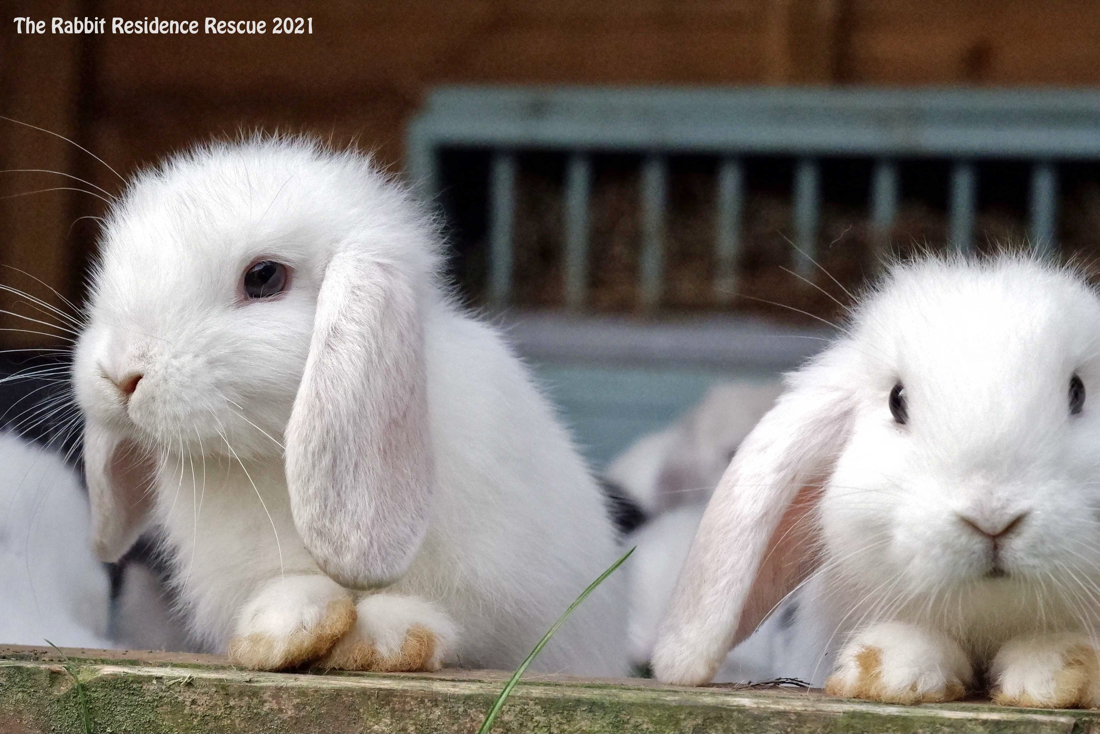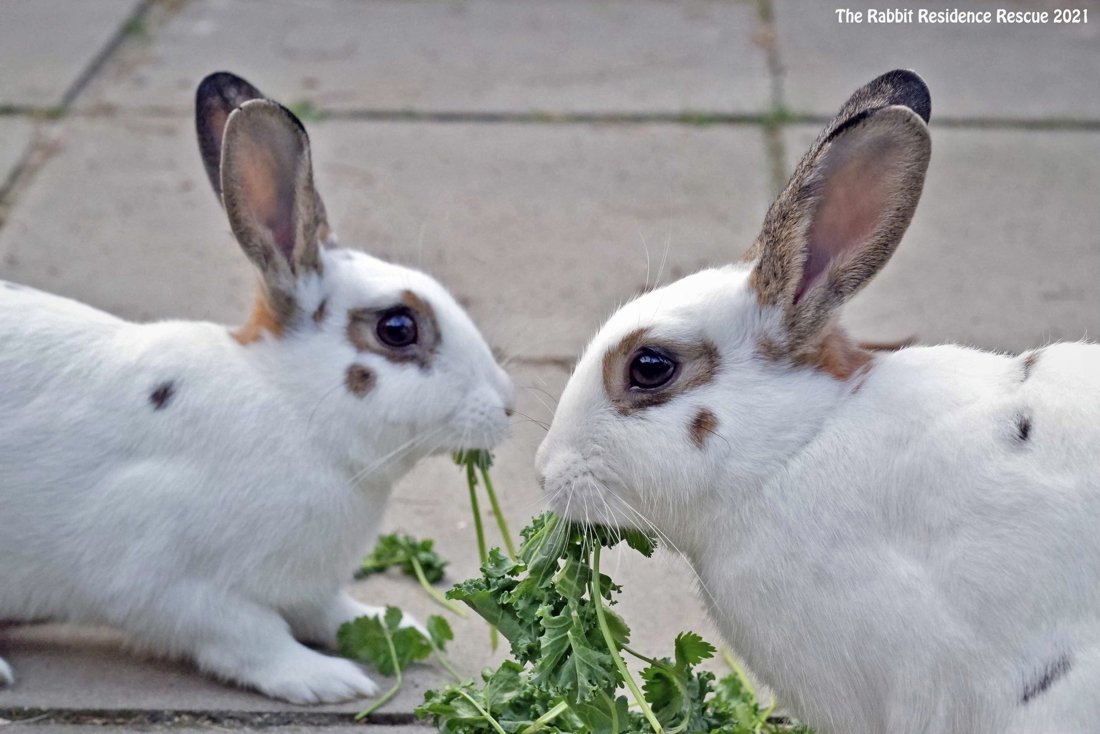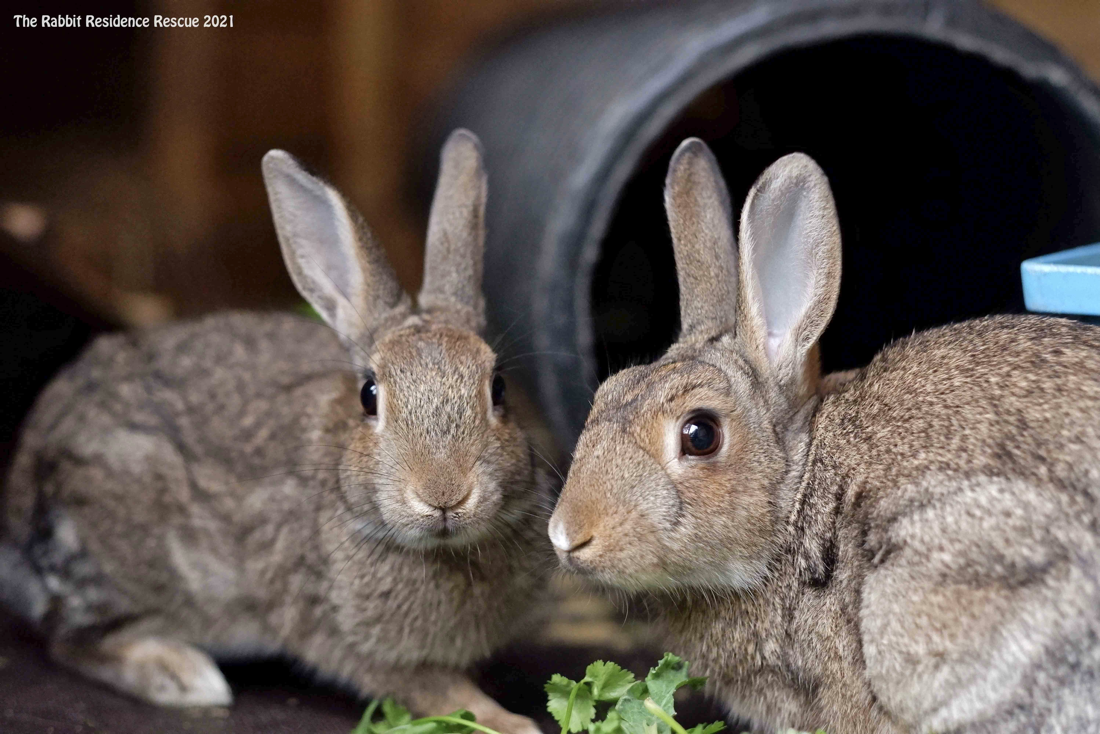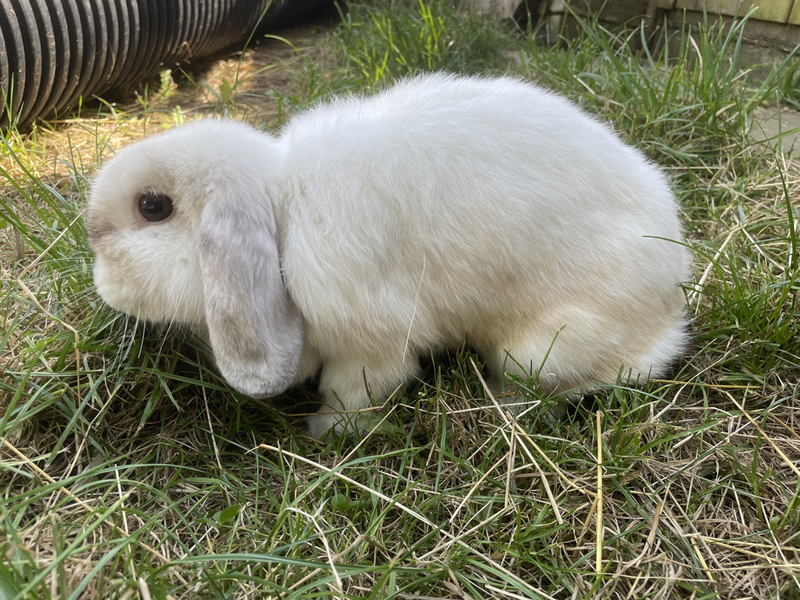Bonding rabbits
It's important to recognise that even though you rabbit is neutered they may still exhibit hormonal behaviour. This article is really useful in briefly explaining what hormonal behaviour is and when you as an owner need to worry. https://rabbitwelfare.co.uk/rabbit-health/hormonal-behaviour-neutered-rabbits/
Unfortunately the rescue is unable to help with bonding rabbits for those of you who have not adopted from us.
If you wish to bond your own rabbits there's some useful information here https://rabbitwelfare.co.uk/rabbit-care-advice/bonding-rabbits/
Groups of rabbits
Nicola and Gareth's story
Back in 2010, when we had a neutered male/female pair, we decided to try and bond another (neutered) female in and form a group. The trio bonding took a while and, although the three bunnies did eventually live together for several months without fighting, the female we had bonded in last always seemed to be left out. We therefore decided to get her a husbun of her own.
After a year of having two separate male/female pairs, we decided to try bonding them as a group of four. It took several months of trying different methods of bonding – internet searches will bring up many options and you have to decide which works best for you but some of the methods we tried included: setting up two side-by-side pens in neutral territory and swapping the pairs over regularly; taking all four for a drive in a very large pet carrier; putting all four in an empty bath. We did eventually get the four bunnies living together without fighting and our group did have the advantage of being free range house buns with a lot of space – there was one central area with litter tray, hay rack, water etc where they spent their nights and each bun developed their own preferred play/snoozing area for the daytime.
After a year as a group the two males had a minor fight which left one of them requiring stitches so we decided to keep the two male/female pairs separate until the injury was healed and we could spend time re-bonding them properly. Whilst they were separated we started to re-think the idea of a group and decided to keep one pair as house bunnies and make an outdoor enclosure for the other pair. Our 5ft x 6ft garden shed was only being used as junk storage at the time so we emptied it out, put vinyl floor tiles down and made it into a bunny home with nest box, litter tray, hay racks, tunnels etc. The area directly in front of the shed was already paved so we used aviary panels to add a 14ft x 5ft walk-in run and used corrugated clear plastic roof sheets to keep the area dry but still allow daylight in. We even included a small raised garden/digging patch at the end of the run. The hardest part was deciding which two buns to keep as house bunnies and which two to move into the outdoor accommodation!
The two pairs have now been living separately for 9 months and do seem much happier. They still sniff each other through the wire mesh of the aviary panels but, aside from winding each other up a bit, can’t do any damage. We’d always been reluctant to have outdoor bunnies as we thought it would be difficult to find the motivation to clean them out in the winter and would also be difficult to build a bond with them when we spent less time outside, but we’ve actually found it nice to have a reason to spend time in the fresh air every day and the roof on the aviary means it is always dry. There has also been the added advantage that both pairs have become perfectly litter trained – as a group, the litter training could be a bit hit-and-miss, but as two pairs they only ever use their litter tray.
Ultimately it is the personalities of the bunnies involved that will determine whether a group will work, and therefore it is important to know the bunnies involved before deciding whether to try and bond as a group. It is also more difficult to monitor their health and behaviour when in a group, and this is another reason why it is important to know the bunnies well so you are more able to recognise if there is a problem. Looking back, we think that our two males were never likely to get on as both have always been very dominant, strong-willed bunnies. We would never say never to attempting to bond a group again in the future, but wouldn’t do it unless we felt the personalities of the buns involved were compatible. We would also suggest that people don’t try to bond a group themselves unless they are very confident with recognising rabbit behaviours and/or know the bunnies involved well.
After a year of having two separate male/female pairs, we decided to try bonding them as a group of four. It took several months of trying different methods of bonding – internet searches will bring up many options and you have to decide which works best for you but some of the methods we tried included: setting up two side-by-side pens in neutral territory and swapping the pairs over regularly; taking all four for a drive in a very large pet carrier; putting all four in an empty bath. We did eventually get the four bunnies living together without fighting and our group did have the advantage of being free range house buns with a lot of space – there was one central area with litter tray, hay rack, water etc where they spent their nights and each bun developed their own preferred play/snoozing area for the daytime.
After a year as a group the two males had a minor fight which left one of them requiring stitches so we decided to keep the two male/female pairs separate until the injury was healed and we could spend time re-bonding them properly. Whilst they were separated we started to re-think the idea of a group and decided to keep one pair as house bunnies and make an outdoor enclosure for the other pair. Our 5ft x 6ft garden shed was only being used as junk storage at the time so we emptied it out, put vinyl floor tiles down and made it into a bunny home with nest box, litter tray, hay racks, tunnels etc. The area directly in front of the shed was already paved so we used aviary panels to add a 14ft x 5ft walk-in run and used corrugated clear plastic roof sheets to keep the area dry but still allow daylight in. We even included a small raised garden/digging patch at the end of the run. The hardest part was deciding which two buns to keep as house bunnies and which two to move into the outdoor accommodation!
The two pairs have now been living separately for 9 months and do seem much happier. They still sniff each other through the wire mesh of the aviary panels but, aside from winding each other up a bit, can’t do any damage. We’d always been reluctant to have outdoor bunnies as we thought it would be difficult to find the motivation to clean them out in the winter and would also be difficult to build a bond with them when we spent less time outside, but we’ve actually found it nice to have a reason to spend time in the fresh air every day and the roof on the aviary means it is always dry. There has also been the added advantage that both pairs have become perfectly litter trained – as a group, the litter training could be a bit hit-and-miss, but as two pairs they only ever use their litter tray.
Ultimately it is the personalities of the bunnies involved that will determine whether a group will work, and therefore it is important to know the bunnies involved before deciding whether to try and bond as a group. It is also more difficult to monitor their health and behaviour when in a group, and this is another reason why it is important to know the bunnies well so you are more able to recognise if there is a problem. Looking back, we think that our two males were never likely to get on as both have always been very dominant, strong-willed bunnies. We would never say never to attempting to bond a group again in the future, but wouldn’t do it unless we felt the personalities of the buns involved were compatible. We would also suggest that people don’t try to bond a group themselves unless they are very confident with recognising rabbit behaviours and/or know the bunnies involved well.
Volunteer Gary's advice
I can confirm that groups (more than 2) are more difficult and higher maintenance. They also take at least twice as long to bond. Even when they seem to get on, you really need to be on the ball with regularly checking for injuries etc as they may have more tussles when you are not watching. It also makes it more difficult to monitor what's going in and out of each bunny when there are more living together, so it becomes more important to do regular health checks and weighing. I certainly would advise against taking on a group to anyone who isn't very experienced with rabbit health and behaviour. We have a few contacts from other rescues that have successfully bonded groups and they do say that four is better than three, as the two that get on the best will often pair up and kick the other one out.If you do decide to go ahead yourself and want to create a bunny group, The Rabbit Crossing have an excellent leaflet on bonding. It's not specifically targeted at groups, but the information in it is equally applicable. I don't think they have a website at the moment, but according to Rabbit Rehome this is their email address is: [email protected] Janice Newbury recommended the leaflet to us - she used to work for ARC and from what I have heard was an expert at group bondings of rabbits, but I believe she has left now.
Hope that's helpful!
Hope that's helpful!




